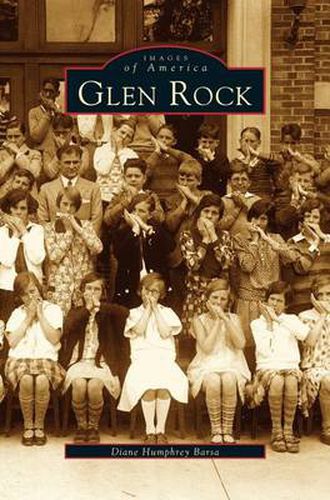Readings Newsletter
Become a Readings Member to make your shopping experience even easier.
Sign in or sign up for free!
You’re not far away from qualifying for FREE standard shipping within Australia
You’ve qualified for FREE standard shipping within Australia
The cart is loading…






This title is printed to order. This book may have been self-published. If so, we cannot guarantee the quality of the content. In the main most books will have gone through the editing process however some may not. We therefore suggest that you be aware of this before ordering this book. If in doubt check either the author or publisher’s details as we are unable to accept any returns unless they are faulty. Please contact us if you have any questions.
Originally part of the Bergen County area known as Godwinville and then Ridgewood, Glen Rock voted to become a borough in 1894. The rock from which the borough took its name was deposited at the end of the last ice age by a retreating glacier. Local folklore tells of Native Americans, the Lenni Lenape, holding meetings on the rock. Early settlers used the rock as a landmark in deeds for the farms they created out of the heavily wooded land. Local streams powered gristmills and sawmills. By 1842, trains brought goods to the area, and within a decade, passenger trains carried the first of the daily commuters to and from New York City.Glen Rock, a photographic journey, documents the growth of the community from the late 1880s through the late 1950s. The early strawberry fields, farms, mills, and hotels made way for today’s stores and homes. The dirt roads once used by horse and buggy, stagecoach, and bicycle were paved for early automobiles. The original schools became too small to hold the growing number of children, and new schools were built. Glen Rock’s leaders created municipal departments, civic organizations, emergency services, businesses, and places of worship. Parades, picnics, and pageants entertained Glen Rockers. Wars and the Great Depression brought citizens together, and residents gathered to help each other and the nation.
$9.00 standard shipping within Australia
FREE standard shipping within Australia for orders over $100.00
Express & International shipping calculated at checkout
This title is printed to order. This book may have been self-published. If so, we cannot guarantee the quality of the content. In the main most books will have gone through the editing process however some may not. We therefore suggest that you be aware of this before ordering this book. If in doubt check either the author or publisher’s details as we are unable to accept any returns unless they are faulty. Please contact us if you have any questions.
Originally part of the Bergen County area known as Godwinville and then Ridgewood, Glen Rock voted to become a borough in 1894. The rock from which the borough took its name was deposited at the end of the last ice age by a retreating glacier. Local folklore tells of Native Americans, the Lenni Lenape, holding meetings on the rock. Early settlers used the rock as a landmark in deeds for the farms they created out of the heavily wooded land. Local streams powered gristmills and sawmills. By 1842, trains brought goods to the area, and within a decade, passenger trains carried the first of the daily commuters to and from New York City.Glen Rock, a photographic journey, documents the growth of the community from the late 1880s through the late 1950s. The early strawberry fields, farms, mills, and hotels made way for today’s stores and homes. The dirt roads once used by horse and buggy, stagecoach, and bicycle were paved for early automobiles. The original schools became too small to hold the growing number of children, and new schools were built. Glen Rock’s leaders created municipal departments, civic organizations, emergency services, businesses, and places of worship. Parades, picnics, and pageants entertained Glen Rockers. Wars and the Great Depression brought citizens together, and residents gathered to help each other and the nation.